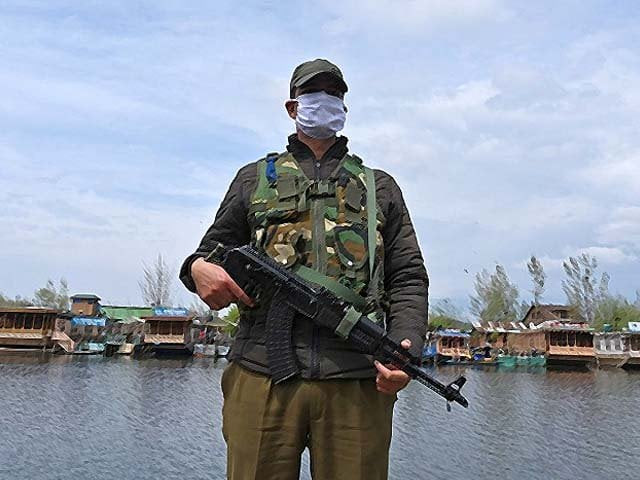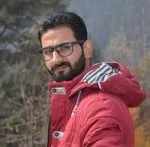“symbol of our effort, of our self-restraint and our resolve to fulfill our duty in service of the nation.”
This resulted in a cacophonous din of clapping from balconies across the country, something which has widely been criticised and mocked. Earlier, in February, the World Health Organisation (WHO) had issued certain guidelines warning nations that they may face a shortage of essential medical equipment such as face masks, gloves and ventilators. The guidelines were supposed to serve as a wake up call so that countries could procure the necessary personal protective equipment (PPEs) needed to ensure the welfare of doctors and citizens. But despite a large population, an inadequate healthcare system and poorly equipped hospitals, India failed to take precautionary measures in due time. The Indian prime minister took twenty days to take serious action, and in the process has put the entire nation at risk.
Health experts in the country had been warning that the spread of coronavirus across India could prove to be lethal. Some warned that the virus could do more damaging in the northern states of India which have inadequate healthcare systems and less equipped hospitals as compared to the southern states. Had the government considered the severity of the situation when the WHO had issued its warnings then perhaps the scenario in India would have been different today. But while India grapples with a lockdown, there are fears that Kashmir could be one of the worst hit areas in India as a result of this pandemic.
Kashmir’s ailing healthcare system
Soon after the decision to scrap Article 370 in August 2019, the Modi led Bharatiya Janata Party (BJP) government began promising that the newly carved union territory (UT) would ensure the full-scale development of the healthcare system and medical services in the region. After the abrogation of Article 370, the administration of Jammu and Kashmir resorted to advertising on the front pages of local dailies about what developments the newly carved UT would soon witness. Among the promises, advancements in the health sector was right at the top. But it soon became evident that these were just hollow promises. The pledge of building better medical infrastructure, fast tracking construction in already sanctioned hospitals, and making the healthcare system more affordable never materialised.
Kashmir is still reeling under the crisis which it used to face before the abrogation of Article 370. The hospitals still have poor infrastructure, there is a shortage of doctors and paramedics, the primary healthcare units are lacking in modern equipment, and the current inability to deal with the pandemic is an apt reminder of this. Now that the current escalation in the transmission of coronavirus is threatening Kashmir, hospitals are suffering from a shortage of supplies, essential testing machines, affordable testing kits and PPEs.
In February, the administration of the UT issued a presser in which they stated that they are competent enough to tackle any untoward situation. This public relations exercise continued till March 14th with some bold headlines boasting the fact that Jammu and Kashmir had no coronavirus cases at the time and that everything was under control.
But, by the time the administration announced the lockdown, Kashmir already had its first COVID-19 case reported, and the total number of coronavirus patients in Jammu and Kashmir has now risen to 75. A few days before the first case came to light, doctors in South Kashmir warned of a lack of medical supplies needed to handle the situation, but the government paid no attention as they were busy issuing their press notes. Meanwhile, the first person to die due to the coronavirus in Kashmir had travelled from Delhi and was not screened at Srinagar airport, despite claims from the administration that they have established checkpoints for screening passengers to combat the pandemic.
Meanwhile, two weeks ago a report appeared in a local newspaper suggesting that only two ventilators were available for all of South Kashmir. Despite, WHO guidelines, the administration of Jammu and Kashmir also failed to stockpile necessary protective equipment for doctors and citizens on time. At present, the hospitals face a shortage of ventilators, masks, gloves and beds, and if the situation gets out of hand then the administration could face a grave crisis. It would be a disaster if doctors and other medical workers become victims of Covid-19 since this would limit their ability to treat patients in Kashmir.
Since the first positive case, the whole valley has been on tenterhooks and now, with each passing minute, the number of cases has started accelerating. As of now, the newly carved UT of Jammu and Kashmir faces a scarcity of essential resources and equipment in the hospitals at the district level. The outbreak would cause massive damage to the remote villages as primary healthcare centres have inadequate facilities, due to which the lives of doctors and citizens are at great risk.
As of March 28th, Kashmir only had 95 ventilators to cater to nearly eight million people. Hence, if we consider the situation which developed in Wuhan, Iran and Italy then we need to accept the fact that we could be in a deep crisis if the situation across Kashmir gets out of hand. Our hospitals would run out of supplies, there would be a shortage of doctors and then the administration would have to decide who will be provided with a ventilator and who will be left to die.
Meanwhile, doctors and healthcare workers are also facing another crisis due to slower internet services (2G). It’s imperative to mention here that the valley remained cut off from the rest of the world for eight months and currently the slow mobile internet service is throttling doctors who are attempting to battle the outbreak. On one hand the government invites people to use online portals for the payment of bills through net-banking services, while on the other doctors face problems because of a slow internet connection while downloading the new guidelines and procedures to deal with coronavirus cases.
As already predicted by experts, the upcoming days will be harsh. The government has to understand the problems being faced by the doctors and citizens of Kashmir if it truly wishes to combat COVID-19.



COMMENTS
Comments are moderated and generally will be posted if they are on-topic and not abusive.
For more information, please see our Comments FAQ